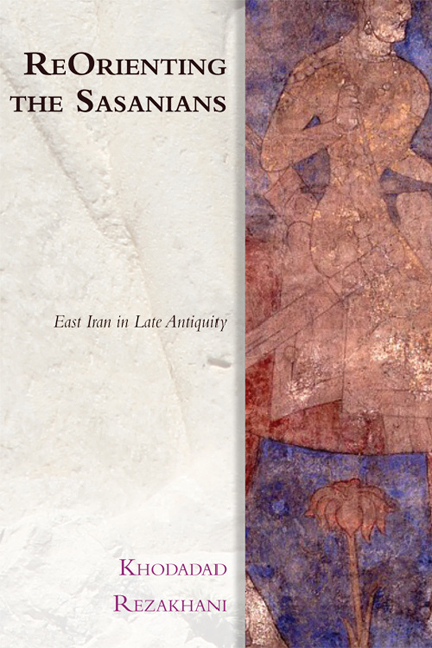Book contents
- Frontmatter
- Contents
- List of Illustrations
- Acknowledgements
- Series Editor's Preface
- Maps
- Preface
- Introduction
- 1 The Sasanians and the Sistanis
- 2 The Kushans and the Sasanians
- 3 The Kushano-Sasanians in East Iran
- 4 The Iranian Huns and the Kidarites
- 5 The Alkhans in the Southern Hindu Kush
- 6 The Hephthalite ‘Empire’ and its Successors
- 7 Sogdiana in the Kidarite and Hephthalite Periods
- 8 The Nēzak and Turk Periods
- 9 Tokharistan and Sogdiana in the Late Sasanian Period
- 10 General Conclusions and Postscript
- 11 Epilogue and Excursus on the Shahnameh
- Bibliography
- Index
3 - The Kushano-Sasanians in East Iran
Published online by Cambridge University Press: 07 December 2017
- Frontmatter
- Contents
- List of Illustrations
- Acknowledgements
- Series Editor's Preface
- Maps
- Preface
- Introduction
- 1 The Sasanians and the Sistanis
- 2 The Kushans and the Sasanians
- 3 The Kushano-Sasanians in East Iran
- 4 The Iranian Huns and the Kidarites
- 5 The Alkhans in the Southern Hindu Kush
- 6 The Hephthalite ‘Empire’ and its Successors
- 7 Sogdiana in the Kidarite and Hephthalite Periods
- 8 The Nēzak and Turk Periods
- 9 Tokharistan and Sogdiana in the Late Sasanian Period
- 10 General Conclusions and Postscript
- 11 Epilogue and Excursus on the Shahnameh
- Bibliography
- Index
Summary
INTRODUCTION
‘Kushano-Sasanian’ is the name given by scholars to a dynasty of rulers who followed the Kushans in the area of Tokharistan, and eventually in Kabulistan and Gandhara. Its Sasanian connection is suggested through its use of imperial Sasanian names such as Ardashir, Wahram, and Pērōz, and some Sasanian titulature such as ‘Great Kushan King’. In one case, the name Pērōz is used among the Kushano-Sasanians even before a Sasanian emperor uses it, and the title of kay was probably used by the Kushano- Sasanians before its adoption by the Sasanians under Yazdgerd II (ad 438–57). The Kushano-Sasanians called themselves by the name Kushanshah and its Bactrian equivalent, showing both continuity with the Kushan dynasty and also possibly the beginning of a geographical designation of the area of their control. As a dynasty, they appear to have been a Sasanian cadet branch, possibly descendants of one of the Sasanian Kings of Kings, who founded an autonomous, and perhaps independent, dynasty ruling over the former Kushan territories in Bactria/Tokharistan. The history of the Kushano-Sasanians is known less through written sources, which are quite scarce, and more through material culture. What can be said, on the other hand, is that despite their modern appellation and the assumptions behind it, we find little ground for classifying them as governors, or ‘local viceroys’, of the Sasanians over the Kushan territories, alongside other such viceroys as the Mešanšah or the Sakanšah. The Kushano-Sasanians, in many senses, appear too significant to have been simply Sasanian governors, and may well reflect an early Sasanian continuation of the Arsacid imperial setting, acting as an allied, but autonomous, cadet branch of the Sasanian royal house.
SASANIANS IN TOKHARISTAN
The beginning of the Sasanian presence in Bactria/Tokharistan and the early foundations of a Sasanian dynasty in the region are best observed through the famous inscription of Shapur I.
- Type
- Chapter
- Information
- ReOrienting the SasaniansEast Iran in Late Antiquity, pp. 72 - 86Publisher: Edinburgh University PressPrint publication year: 2017



